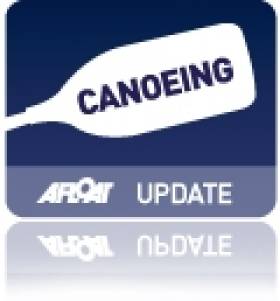Displaying items by tag: Canoe Slalom World Cup
The Irish canoe slalom team had one of its strongest outings of the year in the fourth round of the Canoe Slalom World Cup in Pau, France — the first race back after the World Championships at the end of July.
In the qualification round on Friday (26 August), four out of five athletes qualified through to the semi-finals, including Samuel Curtis in the K1 Men appearing in his first semi-final of the season, and all 3 C1 men, continuing their impressive form in 2022 thus far.
In the C1 Men semi-final itself was Liam Jegou who rose most highly to the occasion, putting in a measured performance on a tight and technical course to qualify through to the 10-boat final in ninth.
Jake Cochrane showed some promising pace with only a two-second penalty incurred on his run keeping him out of the final.
The C1 Men final was packed with the heaviest hitters in the category, with every athlete in the final being an Olympic, World or European medallist.
Going off second in the final, Liam had a great opportunity to lay down a marker to pressure the rest of the field. The Tokyo Olympian did exactly that, improving his time from the semi-final by two seconds in a great display of racing.
The class of the field became clear though, with Liam slipping out of contention for the medals to eventually finish in sixth, his best result of the season. Local favourite Denis Gargaud Chanut claimed his second consecutive gold.
Next week the Irish team will compete in the World Cup Final in La Seu D’Urgell, Spain where double points will be awarded, meaning there could be some big reshuffling in the overall standings.
Results
- C1 Men: Liam Jegou, 6th Final; Jake Cochrane, 16th; Robert Hendrick, 29th Semi-final.
- K1 Men: Samuel Curtis; 38th Semi-final; Alistair McCreery, 48th Qualification.
- Extreme Slalom: Alistair McCreery 22nd, Heats.
Heurteau Ranked 10th in 2012 Canoe Slalom World Cup Standings
#CANOEING - The Irish Times reports that Ciaran Heurteau is 10th in the World Cup standings for 2012 in the K1 slalom.
The Irish paddler, raised in Paris, has competed in all five Canoe Slalom World Cup events this year, with his best result of 5th place at Pau in France in mid summer, as previously reported on Afloat.ie.
More recently the 25-year-old finished 15th at last weekend's event in Bratislava, Slovakia.
Heurteau, who was beaten to a spot at the London Olympics by Eoin Rheinisch, is at 47th place in the latest International Canoe Federation (ICF) world rankings, which are decided from results over a two-year period.
He stands nine places ahead of Rheinisch, who lost out on a place in K1 final in London after a disastrous 50-second time penalty in his semi-final run.
Five Represent Ireland at Canoe Slalom World Cup
Eoin Rheinisch joins four others representing Ireland at the Canoe Slalom World Cup today.
Ciarán Heurteau, Patrick Hynes, Hannah Craig and Aisling Conlan round out the squad competing in Leipzig, Germany.
Rheinisch told The Irish Times that he was "shattered" after a week of hard training in Bratislava, aiming for the World Championships and Olympic qualification there in September.
"But they are the kind of sessions I need to be getting intermittently,” he said.
Big Weekend for Ireland's Canoeists in Balkans
Eoin Rheinisch made a good start in the K1 qualification round at the Canoe Slalom World Cup in Slovenia.
The Kildare native - who is recovering from a shoulder operation - finished 10th in the heats, qualifying for yesterday's semi-finals where he finished in 28th place.
The Irish Times reports that he described the performance as encouraging.
“I enjoyed myself today and that was my goal,” he said.
In other action from Slovenia, Hannah Craig failed make the semi-final in the women’s K1, while Patrick Hynes and Ciaran Heurteau missed out in the men’s K1.
Meanwhile in Serbia, Salmon Leap's Jenny Egan set a new Irish women's record of 1m 55.9 sec in the 500m semis at the European Sprint Canoe Championships in Belgrade, the Evening Herald reports.
She went on to finish ninth in both the 5,000m final annd 200m B final.
Fellow Salmon Leap member Barry Watkins placed fourth in the 500m B final and eighth in the 1,000m B final.


























































